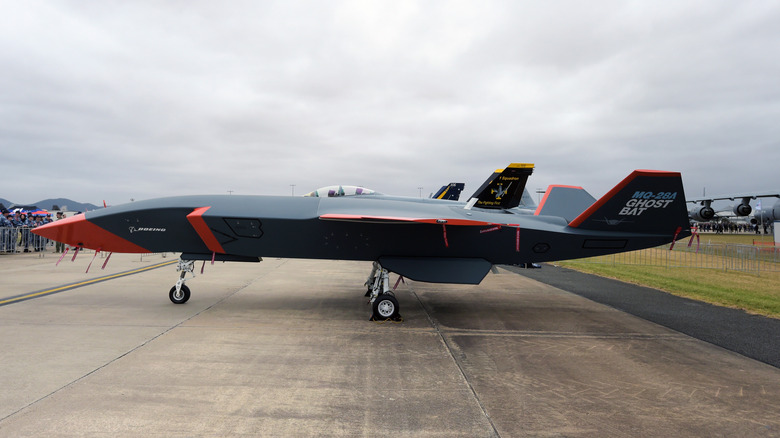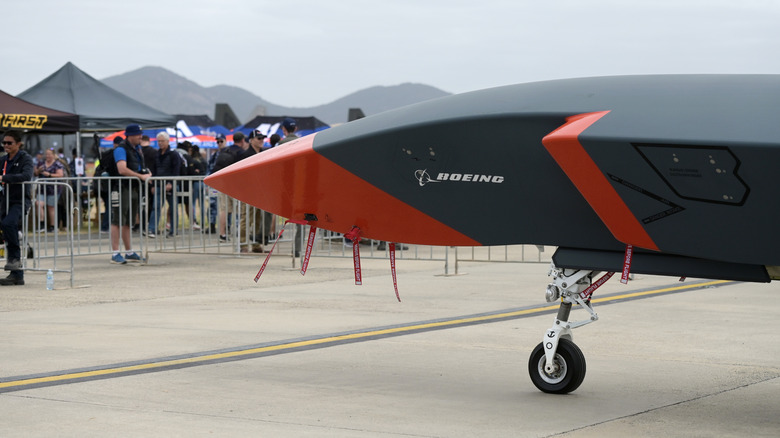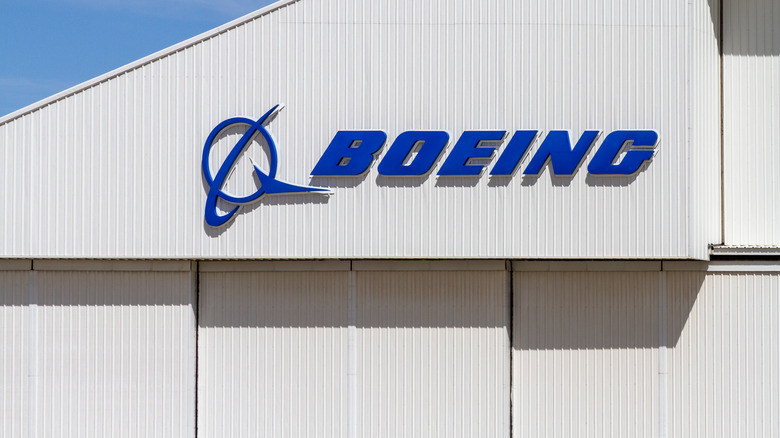Boeing's New 'Ghost Bat' Drone Uses AI To Support Fighter Jets
AI software is sure to change the world, for better or for worse is to be determined. The way we work, the way we surf the Internet, the way we shop on Amazon, and so many other facets of our lives are expected to be transformed by it.
AI isn't just about impressive chatbots like ChatGPT, though. As is so often the case, the most remarkable technology isn't that which is in civilian hands. Military aircraft are capable of speed, maneuverability, and other feats that commercial aircraft certainly aren't, and drones are of tremendous use in a military capacity. From the million-dollar Turkish Bayraktar to the approximately $2000 Chinese DJI Mavic, drones can be stealthy spies, devastating weapons, and everything between on a battlefield. The Ghost Bat drone from Boeing has advanced AI that will allow it to do all of these things.
Here's a closer look at this incredible new technology, and just how sophisticated its systems are poised to be.
The story of the Ghost Bat drone
The largest species of ghost bat, or false vampire bat, lives in Australia. Some of the creature's habits, it seemed, made it a perfect namesake for Boeing's intimidating new drone. The name was chosen, Airpower Teaming System Australia and International's Glen Ferguson explained when announcing it in March 2022, because the ghost bat is "an Australian native mammal known for teaming together in a pack to detect and hunt, [which] reflects the unique characteristics of the aircraft's sensors and Intelligence, Surveillance and Reconnaissance abilities," according to Boeing.
The drone had been in the works for several years before being receiving this intimidating designation, and made its first appearance in May 2020, then known as the Airpower Teaming System, Defense News reported. It is a result of the Loyal Wingman Advanced Development Program, which aims to bring the RAAF equipment that can act as independently as possible.
The Boeing MQ-28 "Ghost Bat" is still in development at the time of writing, but it's certainly set to achieve that aim and more.
What will the drone do?
The MQ-28 is equipped for both offensive and defensive use, boasting sophisticated sensors that will prove invaluable in all aspects of ISR, and it has a range of 2,000 nautical miles. As such, and with its ability to track both opposing and allied craft, it will be well-suited to work in tandem with other conventional fighter jets in formation. At the same time, though, it won't need to, and is a formidable 38-foot package on its own.
The drone is also making waves in the United States, just as the MQ-9 Reaper did. In May 2023, Boeing put out a Tweet that showed it sitting proudly on an airport runway next to Boeing's MQ-25 Stingray, a similar unmanned drone (this one with the capacity to resupply jets). "The MQ-28 Ghost Bat, developed in Australia, provides fighter-like performance to expand airborne missions. The MQ-25 Stingray refuels fighters to keep the mission going," the Tweet reads.
It will be some time before active service begins. Sometime in 2025 is estimated to mark the RAAF's first use of the Ghost Bat. The potential, flexibility, and utility of the Ghost Bat, in particular, all but guarantees that it will have impact on arrival.


